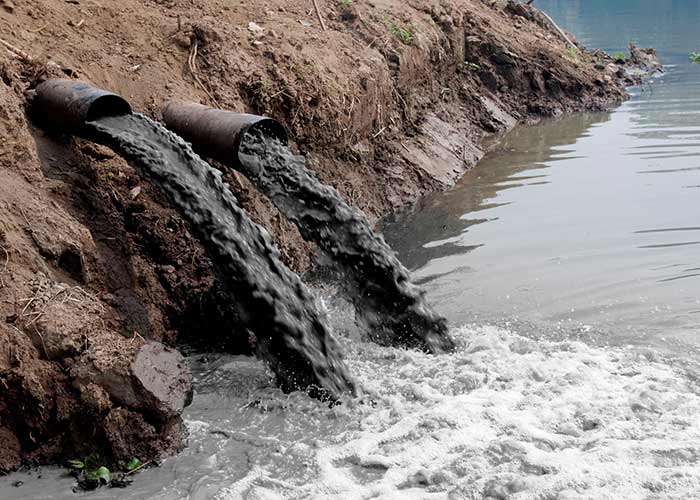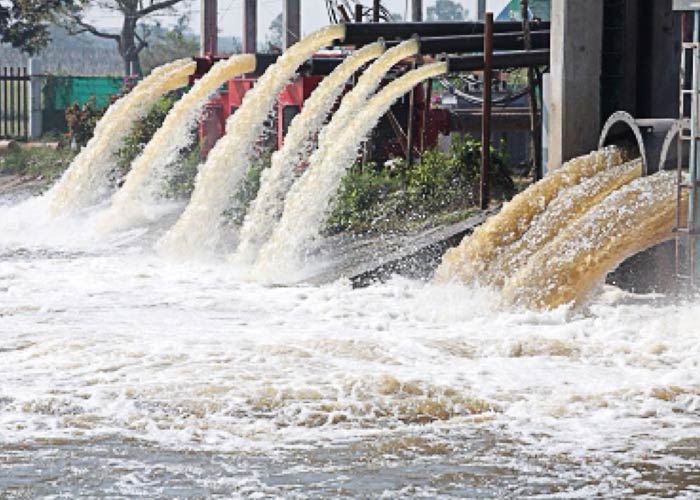The layer of ozone helps prevents the harmful ultraviolet rays away from entering the Earth’s atmosphere. Ozone layer depletion over the years has resulted in ozone hole formation through which harmful radiations can now enter the atmosphere. Ozone layer depletion has many negative effects including cancer risks. These wavelengths can harm plants and animals and also cause skin cancer, sunburn, and cataracts in humans. The problem is very grave indeed and has rightly generated global concern. These concerns led to the adoption of the Montreal Protocol in the year 1987. This protocol bans the production of ozone-depleting chemicals like CFCs and halons.
Meaning of Ozone Layer Depletion
Ozone depletion refers to a steady lowering in the total amount of ozone present in the Earth’s atmosphere or the ozone layer. It can also be described as a much larger decrease in stratospheric ozone around the polar regions of the Earth. The second phenomenon is termed as the ozone hole. In addition to these stratospheric events, there are also springtime polar tropospheric ozone depletion events.
Man-made chemicals like solvents, propellants, halocarbon refrigerants, and foam-blowing agents (chlorofluorocarbon (CFCs), HCFCs, halons), also called the ozone-depleting substances (ODS) are the major causes of the problem. These compounds enter the stratosphere after being emitted at the surface where these compounds release halogen atoms by a process called photo dissociation. This causes breakdown of ozone (O3) into oxygen (O2), leading a decrease in the amount of ozone.
Facts Related To Ozone Layer Depletion
- The ozone layer, a belt of the naturally occurring gas ozone, is found at about 15 to 30 kilometres above Earth. It acts as a shield, thereby protecting the Earth’s atmosphere from the harmful ultraviolet B radiations emitted by the sun.
- Ozone is a highly reactive molecule that contains three oxygen atoms. It is constantly formed and broken down in the high atmosphere, in the region called the stratosphere.
- However, some ozone levels are also found in the lower atmosphere (troposphere). Ozone acts as a harmful contaminant in the troposphere, and occasionally light chemical smog. In the troposphere, this gas can also damage human lungs, fibres and trees in very small quantities.
- As a result of human-generated industrial pollution, the amount of ozone is increasing in the troposphere and the amount of ozone is decreasing in the stratosphere, where it is required.
- Today, the ozone layer is deteriorating because of the release of the chemicals chlorine and bromine. This has resulted in large amounts of ultraviolet B rays to reach the Earth, thus causing cataracts and cancers in humans and harm animals as well.
- Chlorofluorocarbons (CFCs) are the primary culprits in ozone layer breakdown.
- According to the US Agency of Environmental Protection, one atom of chlorine has the ability to destroy thousands of ozone molecules.
- The ozone layer has been particularly impacted by pollution since the mid-1980s. The low temperatures further accelerate the conversion of CFCs to chlorine. This is what is referred to as the “ozone hole.” The ozone layer has deteriorated by about 20 percent.
- Industrialized countries, for example the United States and countries of Europe are the main culprits in ozone layer depletion as they contribute 90 percent of CFCs present in the atmosphere.
- This is despite the fact that CFCs were banned by these countries in 1996.
- Scientists estimate it will take another 50 years for chlorine levels to return back to their normal levels.
- Ultraviolet B radiation that reaches the Earth also messes up the reproductive cycle of single-celled organisms like algae and phytoplankton. This further destroys food chain and growth of other animals and plants.
Causes of Ozone Layer Depletion
The causes of depletion of ozone layer can be broadly divided into manmade causes and natural causes. The effect of manmade causes exceeds that caused by natural causes. Both of them are described below –
Manmade Causes
The main cause of ozone layer depletion is the indiscriminate use of CFCs, which are chlorine-based substances. These are widely used in several manufacturing plants, refrigerants and aerosols. When released into the air, these have a very damaging effect on the ozone layer. Just one atom of chlorine can destroy around 100, 000 molecules of ozone.
Wind blows the CFCs up into the stratosphere. Ozone molecules are already unstable. The chlorine atoms in the CFCs react with the ozone molecules, which break down resulting in the formation of an oxygen molecule and a single free-floating oxygen atom. The chlorine in the atmosphere has immense threat potential. Chlorine in other places such as swimming pools does not pose any danger.
The reactions involved in the process are many, but the simplified reactions are:
Cl + O3 —–> ClO + O2
ClO + O —–> Cl + O2
Net effect: O3 + O —–> 2 O2
Apart from this, chemicals such as halogen, methyl chloroform, carbon tetrachloride etc also can destroy ozone. We use them primarily in our daily comfort facilities like air conditioners, refrigerators, foam, colours, plastic etc.
These substances are mainly used in electronic entrepreneurs. The gas Fryan-11, Fryan-12 used in the air conditioner is also detrimental to the ozone because a molecule of these gases is capable of destroying millions of molecules of ozone.
- Hydrofluorocarbons (HCFCs): They are not as harmful as CFCs to ozone layer. These are used in place of CFCs.
- Halons: These are used in selected fire extinguishers where the equipment could be devastated by water or extinguisher chemicals.
- Carbon Tetrachloride: Also used in selected solvents and fire extinguishers.
- Methyl Chloroform: Commonly used in industries for vapour degreasing, cold cleaning, chemical processing and in some adhesives.
Deforestation
The growing indiscriminate harvesting of trees on the Earth is also one of the reasons. With the cutting of trees, the amount of oxygen in the atmosphere decreases, due to which the formation of molecules of ozone gas decreases.
Natural Causes
In addition to released chemicals, certain natural phenomena like Sun-spots and stratospheric winds are also believed to affect the ozone layer. The harm caused by this is small and temporary, not more than 1-2% depletion. It is also believed that major volcanic eruptions also contribute to the depletion of the ozone layer.
Effects of Ozone Layer Depletion
The hole formed due to depletion of ozone layer enables harmful ultraviolet rays to enter the Earth’s atmosphere. Ultraviolet rays of the Sun are responsible for a variety of health and environmental issues.
Impact on Humans
- Skin cancer: Exposure to ultraviolet rays can cause several types of skin cancers in humans. Some of them include malignant melanoma, and basal and squamous cell carcinoma.
- Eye damage: Problems such as Photokeratitis (snow blindness) and cataracts can be caused by direct exposure to UV rays.
- Immune system damage: Impairment of the immune system is also an effect of the ultraviolet rays. It results in decreased response of the immune system.
- Accelerated aging of skin: Fair skinned people can experience rashes and other skin ailments.
- Other effects: It changes the DNA of humans and animals. Lung related problems such as difficulty in breathing, asthma are also outcomes of direct exposure to ultraviolet rays. If a pregnant woman comes in contact with such rays, there may be irreparable damage to the foetus.
Effects on Amphibians
Ozone depletion affects many species of amphibians at different stages of their life cycle. Some of the effects are stated here.
- Hinders growth and development of larvae.
- Change of behaviour and habits.
- Deformities in some species.
- Blindness and retinal damage.
Impact on Plants
- UV radiation affects the photosynthetic action in plants, and alters the number of flowers produced by a plant and also the time of flowering.
- Plant growth can be directly affected by the UV-B radiation.
Effects on Marine Ecosystems
- A special type of ultraviolet ray (UV-B) penetrates several kilometres into the sea causing damage to marine life.
- Phytoplankton and bacterioplankton are susceptible to increased ultraviolet rays. UV radiation can influence the survival rates of these microscopic organisms, thus affecting the food chain and eventually disturbing the entire ecosystem.
Other Effects
In addition to these affects, ozone present in the lower atmosphere acts as a pollutant and a greenhouse gas, which contributes to global warming and climate change. Studies have shown that the lifespan of lower atmospheric ozone is quite low as compared to stratospheric ozone, thus it causes less harm.
Solutions to Prevent Ozone Layer Depletion
In the present time, due to increasing use of many types of chemicals, and indiscriminate cutting of trees, ozone layer is depleting fast. Solutions to the problem of ozone layer depletion are simple and can be adopted in our daily lives. We just need to introduce some changes to ensure that we do not release ODS (ozone depleting substances). We have the obligation to plant trees so that the oxygen remains in the upper atmosphere and the ozone molecules are formed. At the same time, industry owners and management should also keep in mind that they should not use substances and processes that have a negative effect on the ozone layer.
Avoid using Pesticides
Pesticides are an easy solution to get rid of weeds and viruses, but they cause harm to the ozone layer. In place of pesticides, we should use natural methods. These include mowing your garden regularly to prevent growth of weeds. Making natural pesticides organically is also a way out.
Limit Private Vehicles
Limiting the use of vehicles is the easiest way to reduce release of smog, which eventually causes ozone layer depletion. Some alternate ways to using your car every time can be carpooling or using public transport. People today are also switching to eco-friendly ways like using a bicycle or hybrid cars.
Using Eco-friendly Household Cleaning Products
Many of the cleaning agents contain toxic chemicals that interfere with the ozone layer. Thus, shunning these products can contribute to a clean atmosphere. A lot of health stores and supermarkets today sell cleaning products that are made up of natural ingredients and free of any toxic products.
Making Strict Regulations for Rocket Launches
The number of rocket launches has increased drastically in the past few years as the need to travel to space has increased. This damages the ozone layer in many ways. Studies show that the harm caused by rocket launches is far bigger than the harm caused by CFCs.
All types of rocket engines release by products of combustion that are ozone-destroying compounds. These are expelled directly in the middle and upper stratosphere layer that is near the ozone layer, thereby causing direct harm to it.
In addition to the above solutions, some other things that can ensure protection of ozone layer are:
- Replace halon-based fire extinguishers with others using foam.
- Check on the label of the products, which are bought at the store, to ensure that they do not damage the ozone layer.
- Do not use or buy refrigerators or air-conditioning equipment that use CFCs as refrigerant.
- Do not use sprays or objects made of plastic foam (dry ice or freezer). Lesser consumption of these products will discourage plastic foam manufacturers.
Conclusion
The ozone layer depletion is a problem that needs immediate attention of mankind. The thinning of the ozone layer can be seen at many places. The major cause is the release of chlorofluorocarbons in the atmosphere. The hole in the layer allows the harmful ultraviolet B rays to pass through it and enter the earth’s atmosphere. The harmful outcomes, ill-effects on humans like skin cancers and other impacts on plants have been discussed above.
Scientists believe that due to pollution and seasonal changes, the ozone layer can cause more damage. In such a situation, snow in the South Pole will start to grow rapidly. The water level of the oceans will continue to grow. Crores of people will have to be displaced due to the sinking of coastal areas. Such a crisis will spoil the economic, social and political structures of the sea-bound and their neighbouring countries.
The global concern about ozone layer depletion led to formation of the Montreal Protocol in 1987, which bans the use of CFCs in air-conditioners and refrigerants. Ever since it came into effect, the ozone layer depletion rate has reduced, according to a report by NASA. The countries which have signed the Montreal Treaty have begun to completely shut down on the use of gases like CFC and tetrachloride.
In India, the work related to ozone protection being conducted mainly by the Ministry of Environment and Forests. Along with this, “Small Industries Development Organization”, Indore had also been contributing to it.
Every year, 16th September is celebrated as International Day for the Preservation of the Ozone Layer so that awareness can be made about the facts associated with ozone layer. Thus, the ozone layer situation is improving, but it will need many years for the damage to be repaired.
Such international initiatives have considerably reduced the production of the harmful chemicals and succeeded in preventing the ozone layer from further damage. But still, individuals too should adopt necessary measures in their daily lives and contribute their bit to the protection of ozone layer. Only then can we ensure a healthy and sustainable existence for us, plants and animals.







